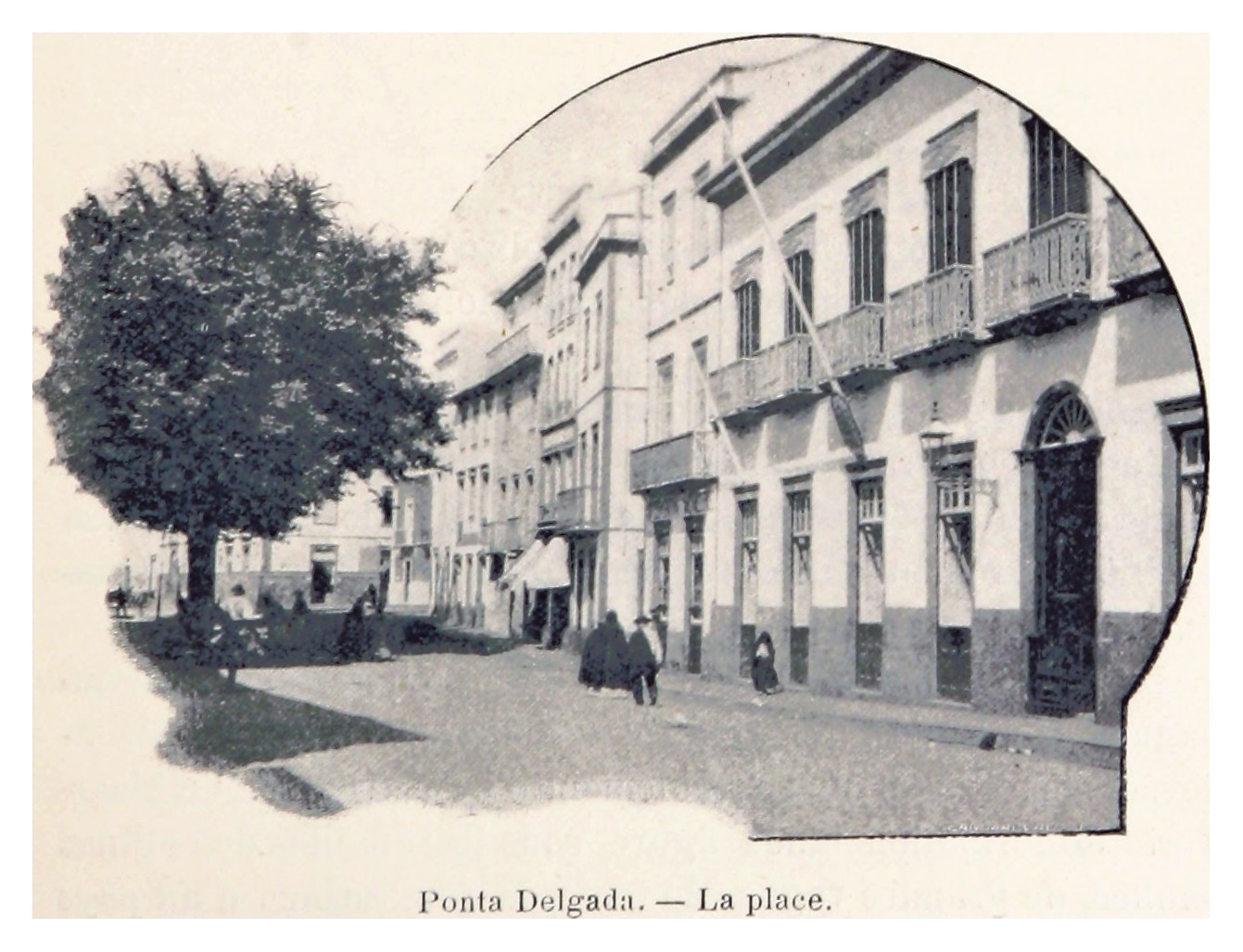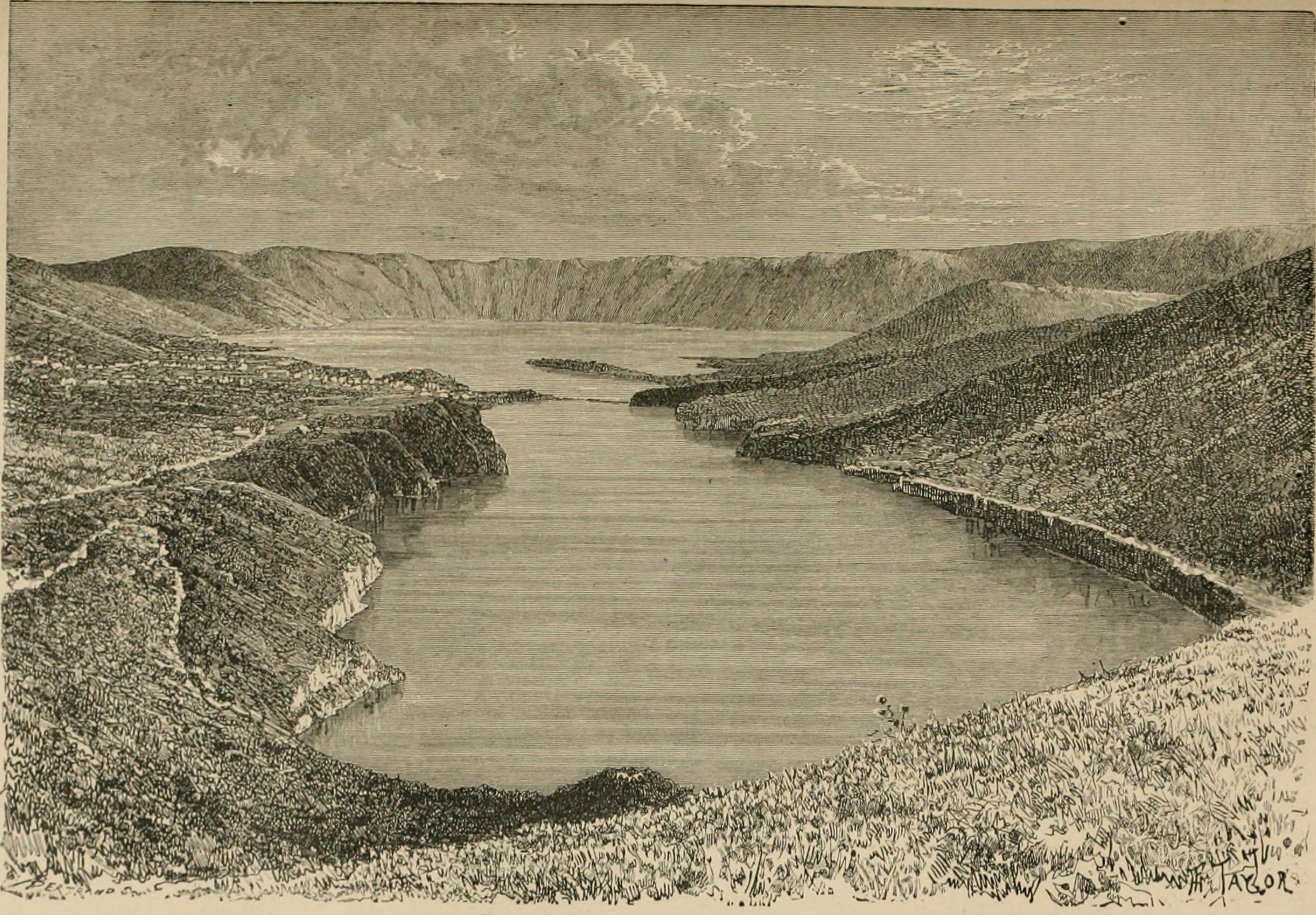|
Remédios
Remédios is a civil parish situated in along the northern coast of the municipality of Ponta Delgada in the Portuguese archipelago of the Azores. The population in 2011 was 931, in an area of . History The parochial church was built in 1958 by order of D. Manuel Afonso de Carvalho, bishop of Angra.DRAC (2010), p.34 The parish was elevated to the status of civil parish two years later, in 1960, when it was de-annexed from the territory of Bretanha. Geography It is located in the northwestern part of the island of São Miguel, and includes the flanks of the Sete Cidades Massif, covered in '' laurisilva'' and endemic plant species to the coastal cliffs. References Notes Sources * {{DEFAULTSORT:Remedios Parishes of Ponta Delgada ... [...More Info...] [...Related Items...] OR: [Wikipedia] [Google] [Baidu] |
Bretanha
A Bretanha was a former Portuguese civil parish in the municipality of Ponta Delgada, on the island of São Miguel in the archipelago of the Azores. History As early as the beginning of the 16th century, the region of Bretanha was already occupied by a few settlers. The first reference to ''Bretanha'' appeared only between 1515 and 1527, since the northwestern region of the island of São Miguel was known as '' Capelas''. In 1515, the region was deannexed from the municipality of Vila Franca do Campo and integrated into the municipality of Ponta Delgada (which was created in 1499). There is little information that survives from this period (1515-1527), a point in the region's chronology occupied with early settlement. At that time historian Gaspar Frutuoso named then area ''Bretanha'', for the rugged, highlands of Brittany: the area was referred to as the ''places of the north'' (and may have colloquially referred to the Portuguese vernacular, as "distant lands in the north ... [...More Info...] [...Related Items...] OR: [Wikipedia] [Google] [Baidu] |
São Miguel Island
São Miguel Island (; Portuguese for "Saint Michael"), nicknamed "The Green Island" (''Ilha Verde''), is the largest and most populous island in the Portuguese archipelago of the Azores. The island covers and has around 140,000 inhabitants, with 45,000 people residing in Ponta Delgada, the archipelago's largest city. History In 1427, São Miguel became the second of the islands discovered by Gonçalo Velho Cabral to be settled by colonists from continental Portugal. This date is uncertain, as it is believed that the island was discovered between 1426 and 1437 and inscribed in portolans from the middle of the 15th century. Its discovery was later recorded by Father Gaspar Frutuoso in the seminal history of the Azores, ''Saudades da Terra'', as he began: "This island of São Miguel where...we are, is mountainous and covered in ravines, and it was, when we discovered it, covered in trees...due to its humidity, with its water showers and ravines warm with sun..." It was sometime ... [...More Info...] [...Related Items...] OR: [Wikipedia] [Google] [Baidu] |
Ponta Delgada
Ponta Delgada (; ) is the largest municipality (''concelho'') and economic capital of the Autonomous Region of the Azores in Portugal. It is located on São Miguel Island, the largest and most populous in the archipelago. As of 2021, it has 67,287 inhabitants, in an area of . There are 17,629 residents in the three central civil parishes that comprise the historical city: São Pedro, São Sebastião, and São José. Ponta Delgada became the region's administrative capital under the revised constitution of 1976; the judiciary and Catholic See remained in the historical capital of Angra do Heroísmo while the Legislative Assembly of the Azores was established in Horta. History The origin of the placename Ponta Delgada (Portuguese for ''delicate or thin point'') was elaborated by the famous Portuguese chronicler, Father Gaspar Frutuoso, who wrote: In around 1450, Pêro de Teive established a small fishing village that eventually grew into the urban agglomeration in Santa ... [...More Info...] [...Related Items...] OR: [Wikipedia] [Google] [Baidu] |
Blessed Virgin Mary
Mary; arc, ܡܪܝܡ, translit=Mariam; ar, مريم, translit=Maryam; grc, Μαρία, translit=María; la, Maria; cop, Ⲙⲁⲣⲓⲁ, translit=Maria was a first-century Jewish woman of Nazareth, the wife of Joseph and the mother of Jesus. She is a central figure of Christianity, venerated under various titles such as virgin or queen, many of them mentioned in the Litany of Loreto. The Eastern and Oriental Orthodox, Church of the East, Catholic, Anglican, and Lutheran churches believe that Mary, as mother of Jesus, is the Mother of God. Other Protestant views on Mary vary, with some holding her to have considerably lesser status. The New Testament of the Bible provides the earliest documented references to Mary by name, mainly in the canonical Gospels. She is described as a young virgin who was chosen by God to conceive Jesus through the Holy Spirit. After giving birth to Jesus in Bethlehem, she raised him in the city of Nazareth in Galilee, and was ... [...More Info...] [...Related Items...] OR: [Wikipedia] [Google] [Baidu] |
Freguesia (Portugal)
''Freguesia'' (), usually translated as "parish" or "civil parish", is the third-level administrative subdivision of Portugal, as defined by the 1976 Constitution. It is also the designation for local government jurisdictions in the former Portuguese overseas territories of Cape Verde and Macau (until 2001). In the past, was also an administrative division of the other Portuguese overseas territories. The '' parroquia'' in the Spanish autonomous communities of Galicia and Asturias is similar to a ''freguesia''. A ''freguesia'' is a subdivision of a '' município'' (municipality). Most often, a parish takes the name of its seat, which is usually the most important (or the single) human agglomeration within its area, which can be a neighbourhood or city district, a group of hamlets, a village, a town or an entire city. In cases where the seat is itself divided into more than one parish, each one takes the name of a landmark within its area or of the patron saint from the usually ... [...More Info...] [...Related Items...] OR: [Wikipedia] [Google] [Baidu] |
Concelho
Concelho () is the Portuguese-language term for municipality, referring to the territorial subdivision in local government. In comparison, the word ''município'' () refers to the organs of State. This differentiation is still in use in Portugal and some of its former overseas provinces, but is no longer in use in Brazil following the abolition of these organs, in favour of the French prefecture system. It is similar to borough A borough is an administrative division in various English-speaking countries. In principle, the term ''borough'' designates a self-governing walled town, although in practice, official use of the term varies widely. History In the Middle ... and council. History After the civil parish ( pt, freguesias), the Portuguese ''concelho'' is the most stable territorial subdivision within the country, with over 900 years of history. Founded in the royal charters attributed to parcels and territorial enclaves, in order to establish a presence by the Cr ... [...More Info...] [...Related Items...] OR: [Wikipedia] [Google] [Baidu] |
Portugal
Portugal, officially the Portuguese Republic, In recognized minority languages of Portugal: :* mwl, República Pertuesa is a country located on the Iberian Peninsula, in Southwestern Europe, and whose territory also includes the Macaronesian archipelagos of the Azores and Madeira. It features the westernmost point in continental Europe, its mainland west and south border with the North Atlantic Ocean and in the north and east, the Portugal-Spain border, constitutes the longest uninterrupted border-line in the European Union. Its archipelagos form two autonomous regions with their own regional governments. On the mainland, Alentejo region occupies the biggest area but is one of the least densely populated regions of Europe. Lisbon is the capital and largest city by population, being also the main spot for tourists alongside Porto, the Algarve and Madeira. One of the oldest countries in Europe, its territory has been continuously settled and fought over since prehistoric tim ... [...More Info...] [...Related Items...] OR: [Wikipedia] [Google] [Baidu] |
Azores
) , motto= ( en, "Rather die free than subjected in peace") , anthem=( en, "Anthem of the Azores") , image_map=Locator_map_of_Azores_in_EU.svg , map_alt=Location of the Azores within the European Union , map_caption=Location of the Azores within the European Union , coordinates = , subdivision_type = Country , subdivision_name = , established_title=Settlement , established_date=1432 , established_title3=Autonomous status , established_date3=30 April 1976 , official_languages= Portuguese , demonym= ( en, Azorean) , capital_type=Capitals , capital = Ponta Delgada (executive) Angra do Heroísmo (judicial)Horta (legislative) , largest_city = Ponta Delgada , government_type= Autonomous Region , leader_title1=Representative of the Republic , leader_name1=Pedro Manuel dos Reis Alves Catarino , leader_title2= President of the Legislative Assembly , leader_name2= Luís Garcia , leader_title3= President of the Regional Government , le ... [...More Info...] [...Related Items...] OR: [Wikipedia] [Google] [Baidu] |
Sete Cidades Massif
Sete Cidades Massif is a stratovolcanic complex, referring to a polygenetic volcano and caldera, located in western part of the island of São Miguel, in the Portuguese archipelago of the Azores. More recognizable for the Lagoa das Sete Cidades at its centre, the volcanic complex includes centuries of geomorphological structures that include lava domes, cones, lava flows and maar geomorphology that have marked its history. History The almost circular caldera is a nested structure formed as a result of three separate caldera collapse episodes,Robert B. Moore (1990), p.603 each associated with explosive eruptions.Jose Pacheo et al. (2002), p.4-5 These caldera collapse episodes occurred following explosive eruptions that formed the ''Risco'', ''Bretanha'' and ''Santa Barbara'' pyroclastic fields.Jose Pacheo et al. (2002), p.5-6 The first phase occurred 35,700 years ago, and ceased with the collapse of the principal volcano. A secondary phase began around 28,750 years ago and wa ... [...More Info...] [...Related Items...] OR: [Wikipedia] [Google] [Baidu] |
Laurisilva
Laurel forest, also called laurisilva or laurissilva, is a type of subtropical forest found in areas with high humidity and relatively stable, mild temperatures. The forest is characterized by broadleaf tree species with evergreen, glossy and elongated leaves, known as "laurophyll" or "lauroid". Plants from the laurel family (Lauraceae) may or may not be present, depending on the location. Ecology Laurel and laurophyll forests have a patchy distribution in warm temperate regions, often occupying topographic refugia where the moisture from the ocean condenses so that it falls as rain or fog and soils have high moisture levels.Abstract at NASA – MODIS: Izquierdo, T; de las Heras, P; Marquez, A (2011). Vegetation indices changes in the cloud forest of La Gomera Island (Canary Islands) and their hydrological implications". ''Hyd ... [...More Info...] [...Related Items...] OR: [Wikipedia] [Google] [Baidu] |




.jpg)